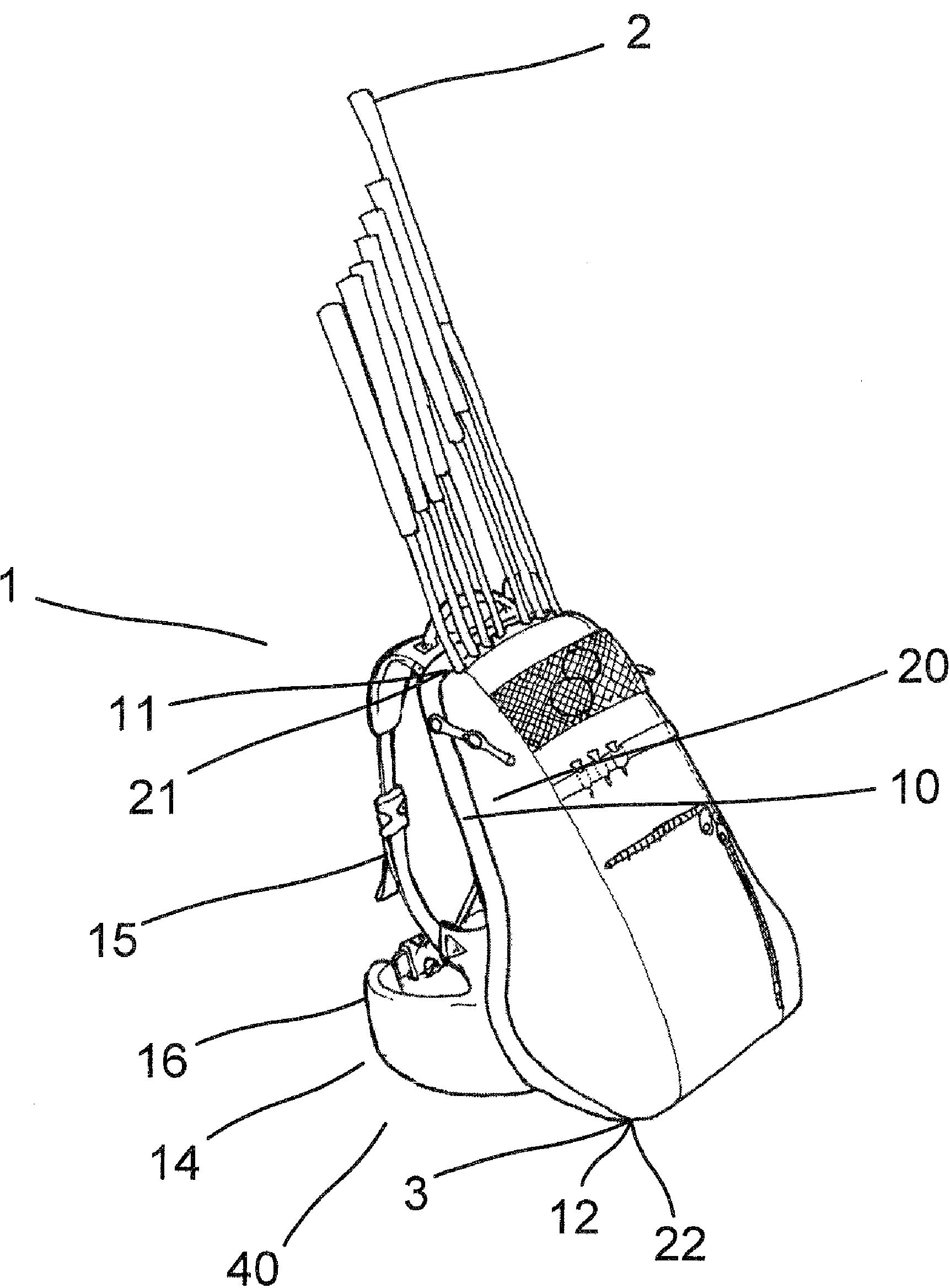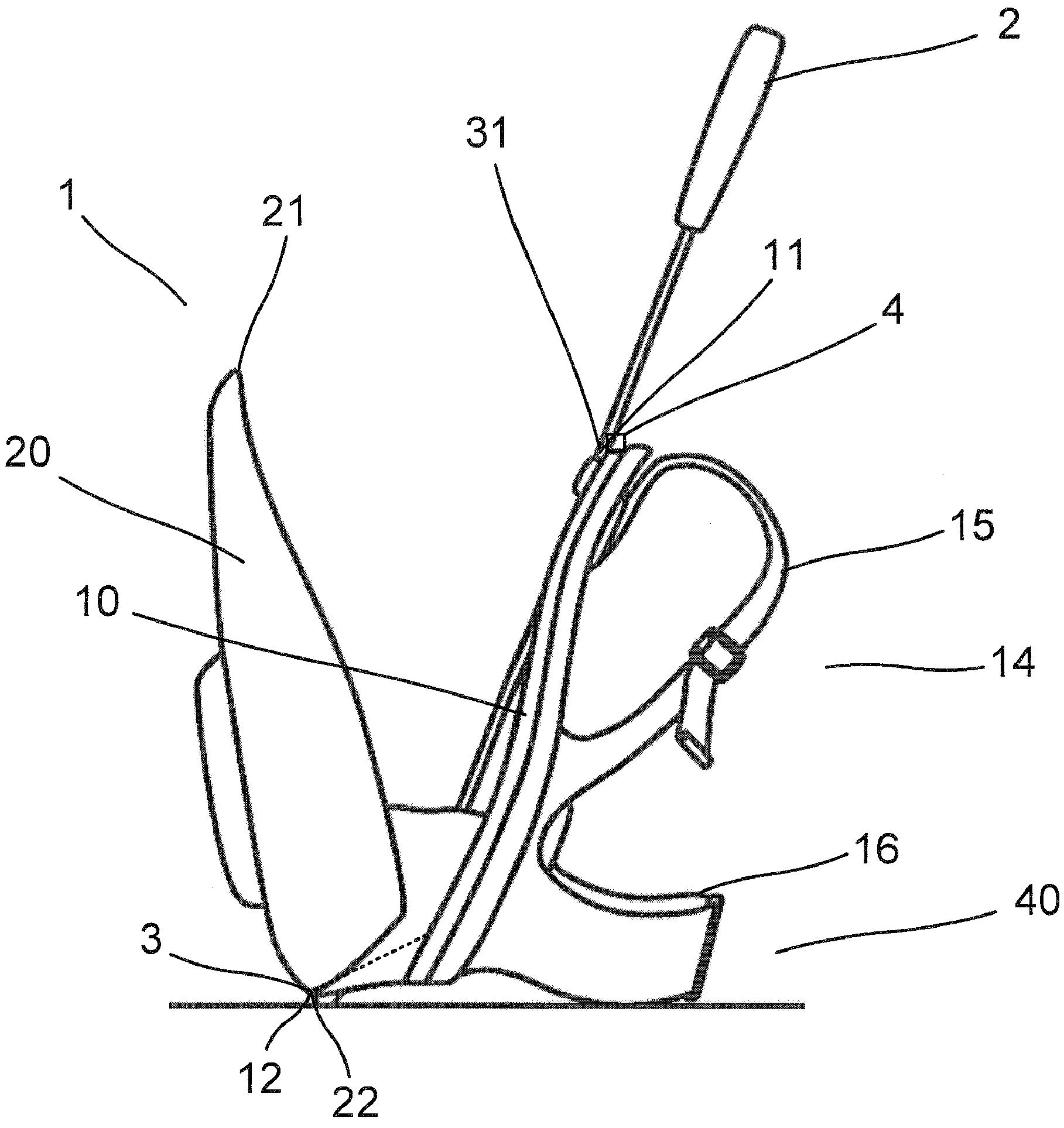Hot Product or Flop Product? Now This is a True Sunday Bag!
It doesn’t take a lot to explain this golf bag invention, check it out!



The invention is described in a patent application that published today as US Pub. No. 20090145787 titled “Golf Bag.” The application explains the need for the invention as follows:
So, hot product or flop product? I think this puppy would sell so I am going with “hot product.” Congratulations to the inventors.
David Dawsey - Monitoring Golf Bag Inventions
PS – check out golf cart related posts here, here, here, here, and here



The invention is described in a patent application that published today as US Pub. No. 20090145787 titled “Golf Bag.” The application explains the need for the invention as follows:
[0003] Transport to and from the golf sport facilities can of course be carried out in many different ways, but some ways of transportation are associated with certain problems. Namely, a conventional bag of the golf bag type is quite bulky and difficult to take, for example when travelling by foot, by bike or by motorcycle, but also for example when using public transport such as on a bus. This is so for the classic golf bag, which essentially consists of an elongated tube down into which the clubs are put with their shafts first, with or without a cart, as well as for the more recently presented carry bag, which also essentially consists of an elongated tube, down into which the clubs are put shafts first, but which is carried with the bag on the back in an inclined manner.
[0004] It is also common practice for a player to bring only a few golf clubs to the facilities, such as for practice, whereby conventional golf bags do not offer a simple and comfortable transport in relation to the small amount of transported equipment.
[0005] During the game itself, demands for speed and flexibility are becoming increasingly more common, not least when playing so-called "speed golf", where players often run between strokes. Of course, such demands also arise for other golfing variants. A conventional carry bag does indeed allow the user to move relatively freely over the playing field, but still imposes a problem when, for example, searching for lost balls in dense woods or brushwood. Namely, the bag and the club shafts extend a certain distance on either side of the player's body. Also, it is difficult to move around quickly and ergonomically with such a carry bag, partly because of the tendency of the clubs to rattle around in the bag as the player moves, even in the case where the interior of the bag is divided into a number of separated partitions for different clubs, partly because of the fact that the bag needs to be positioned either so high on the player's back so as to provide bad ergonomics, or so low so as to risk hitting against the behind of the player, which lessens the mobility of the player, for example when running.
[0006] Furthermore, a conventional carry bag is often unnecessarily heavy, clumsy, and not ergonomical enough for use by, for example, smaller lady and junior players, but also by elderly players. The bad ergonomics is increased because of the club heads being asymmetrically positioned outside of the bag, thereby displacing the centre of gravity.
[0007] Hence, it would be desirable to obtain a low-weight bag for golf clubs and peripheral equipment which is simple and easy to transport, even on foot, by bike, and so on, and at the same time offering good ergonomics during transport on the golf course, and not constituting an obstacle, especially not during rapid transport and/or transport in rough terrain.
[0008] Furthermore, it would be desirable to obtain such a bag which is especially advantageous when playing with only a few clubs. Moreover, it would be desirable to obtain such a bag in which golf equipment suitably can be stored when not used.
So, hot product or flop product? I think this puppy would sell so I am going with “hot product.” Congratulations to the inventors.
David Dawsey - Monitoring Golf Bag Inventions
PS – check out golf cart related posts here, here, here, here, and here

Comments